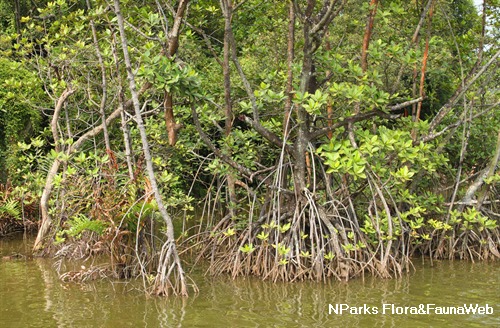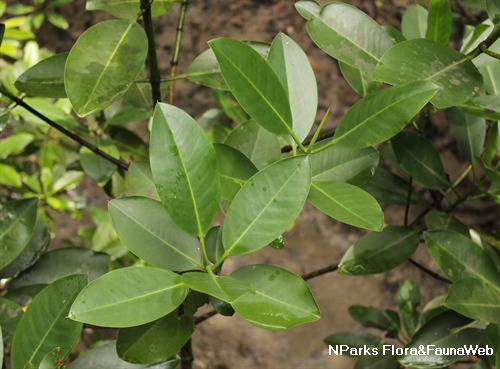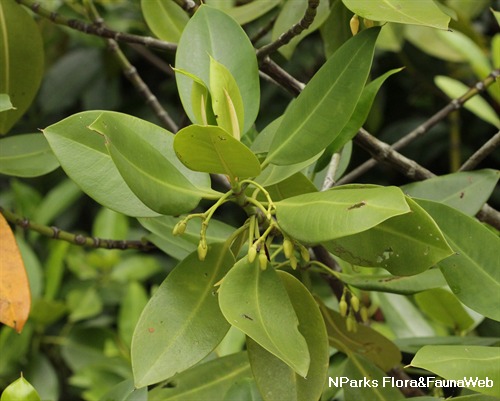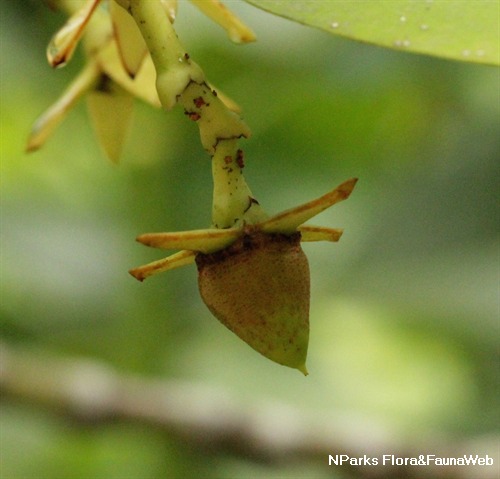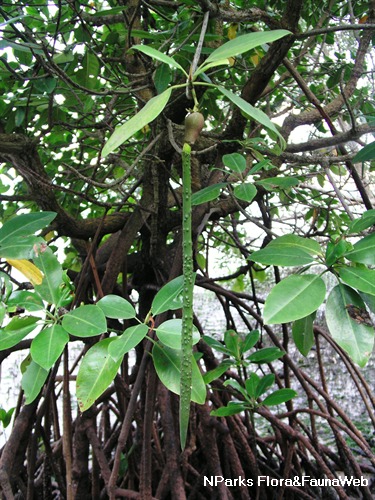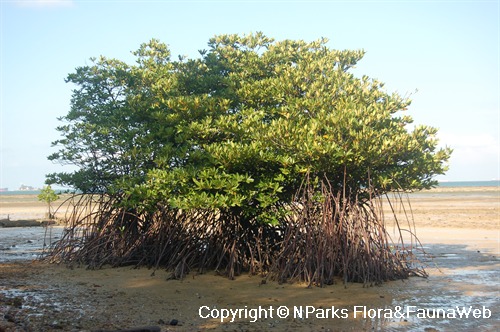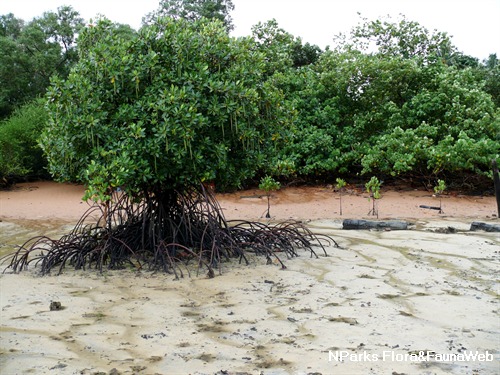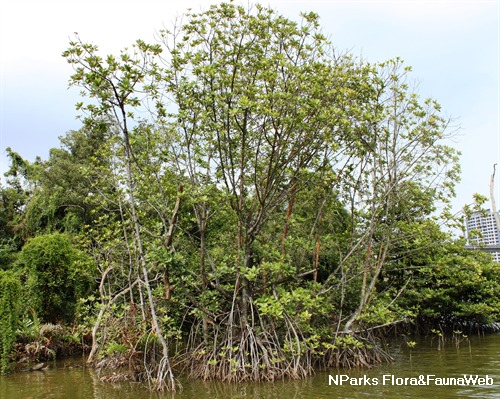
Back
Rhizophora mucronata Poir.
| Family Name: | Rhizophoraceae |
| Synonyms: | Rhizophora canderlaria, Rhizophora longissima, Rhizophora macrorrhiza, Rhizophora latifolia |
| Common Name: | Bakau kurap, Bakau belukap, Bakau gelukap, Bakau jankar |
Name
Classifications and Characteristics
| Plant Division | Angiosperms (Flowering Seed Plants) (Dicotyledon) |
|---|---|
| Plant Growth Form | Tree (Medium (16m-30m)) |
| Lifespan (in Singapore) | Perennial |
| Mode of Nutrition | Autotrophic |
Biogeography
| Native Distribution | East Africa, Madagascar, India, Bangladesh, Mauritius, Southeast Asia, including Singapore, Australia, the Solomon Islands, Melanesia and Micronesia |
|---|---|
| Native Habitat | Shoreline (Mangrove Forest) |
| Preferred Climate Zone | Tropical, Sub-Tropical / Monsoonal |
| Local Conservation Status | Native to Singapore (Least Concern (LC)) |
Description and Ethnobotany
| Growth Form | Erect, evergreen tree, reaching 20 - 25 m tall. |
|---|---|
| Trunk | Dark black bark, horizontally fissured. |
| Roots | Has both aerial and stilt roots growing from lower branches. |
| Foliage | Broadly elliptic to slightly oblong leathery leaves, measuring 11 - 23 by 5 - 23 cm, opposite arrangement. Leaf stalk is about 2.5 - 5.5 cm long, leaflets at base of leaf stalk about 5.5 - 8.5 cm. |
| Flowers | Flower stalks usually have 2 - 5 flowers, each on a 2.5 - 5 cm long individual stalk. Buds are widest near the base and have two 2-lobed leaflets near the base. 4 white petals having densely hairy margins and about 9 mm long. Calyx is deeply lobed and pale yellow, about 13 - 19 mm long. Flower has 8 stamens and style is about 0.5 - 1.5 mm long. |
| Fruit | Dull, brownish-green fruit is elongated to egg-shaped, often rough at the base, single seeded and 5 - 7 cm long. Hypocotyl is cylindrical, rough and warty, about 36 - 64 cm long and up to 2 cm wide. |
| Habitat | Found in intermediate to upstream estuarine zone in the lower to mid-intertidal region, and more to the seaward side. Usually found growing in groups near or on the banks of tidal creeks. |
| Associated Flora | Generally found growing with Rhizophora apiculata. |
| Associated Fauna | Propagules are usually eaten by crabs. |
| Ethnobotanical Uses | Timber & Products: Wood is used for charcoal and firewood. Tannin in bark is used for tanning and dyeing. |
Landscaping Features
| Landscape Uses | Coastal, Riverine |
|---|
Fauna, Pollination and Dispersal
| Pollination Method(s) | Biotic (Fauna) |
|---|---|
| Seed or Spore Dispersal | Abiotic |
Plant Care and Propagation
| Light Preference | Full Sun |
|---|---|
| Water Preference | Lots of Water, Moderate Water |
| Plant Growth Rate | Moderate to Slow |
| Rootzone Tolerance | Moist Soils, Waterlogged Soils (Drains Site), Saline Soils / Salt Spray |
| Maintenance Requirements | Moderate |
| Propagation Method | Viviparious Propagule |
Foliar
| Foliage Retention | Evergreen |
|---|---|
| Mature Foliage Colour(s) | Green |
| Mature Foliage Texture(s) | Leathery |
| Prominent Young Flush Colour(s) | Green - Light Green |
| Foliar Arrangement Along Stem | Opposite |
| Foliar Attachment to Stem | Petiolate |
| Foliar Venation | Pinnate / Net |
| Foliar Margin | Entire |
Non - Foliar and Storage
| Mature Bark Texture | Fissured |
|---|
Floral (Angiosperm)
| Flower & Plant Sexuality | Bisexual Flowers |
| Flower Grouping | Cluster / Inflorescence |
|---|---|
| Flower Location | Axillary |
Image Repository
Others
| Master ID | 30330 |
|---|---|
| Species ID | 4639 |
| Flora Disclaimer | The information in this website has been compiled from reliable sources, such as reference works on medicinal plants. It is not a substitute for medical advice or treatment and NParks does not purport to provide any medical advice. Readers should always consult his/her physician before using or consuming a plant for medicinal purposes. |


